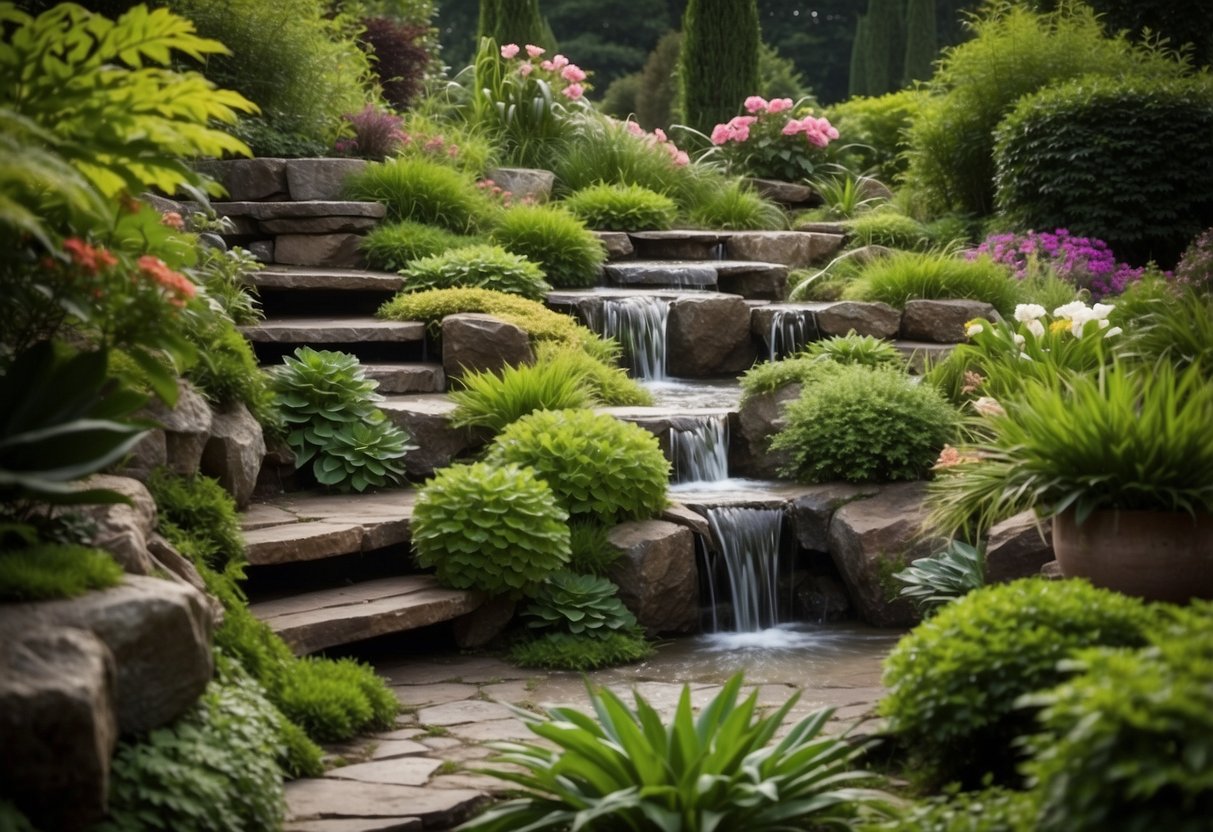Multi Level Garden Ideas: Transform Your Yard with Creative Layers
Creating a multi-level garden can transform your outdoor space into a beautifully layered sanctuary. Whether you have a small backyard or a sprawling property, incorporating different levels can add depth and interest to your garden.

Why should you consider a multi-level garden? This design allows you to maximize your space, making it more functional and visually appealing. You’ll find that it creates distinct zones for different activities, from relaxing and entertaining to gardening and cooking.
Design Principles For Multi Level Gardens

When designing a multi level garden, it’s important to maximize vertical space, choose the right plants, and create accessible walkways. These principles ensure that your garden is both functional and aesthetically pleasing.
Maximizing Vertical Space
Use Structures: Incorporate pergolas, arbors, and trellises to create height and interest in your multi level garden. These structures can support climbing plants and provide shaded areas.
Raised Beds: Utilize raised beds for planting. This not only adds levels but also makes gardening easier on your back. Raised beds help with drainage and soil quality.
Vertical Planters: Use wall-mounted or freestanding vertical planters to add more greenery without taking up much ground space. These are great for herbs and small flowers.
Choosing The Right Plants
Layered Planting: Select plants of varying heights to create depth. Taller plants like sunflowers or ornamental grasses can be placed at the back, with shorter ones like marigolds or lavender at the front.
Climbers and Trailers: Incorporating climbing plants like ivy or trailing plants like creeping thyme adds a natural flow between levels. These plants can also soften the edges of hard landscaping.
Diverse Selections: Opt for a mix of perennials and annuals. Perennials like hostas and ferns provide a constant presence, while annuals like petunias offer seasonal color and variety.
Creating Accessible Walkways
Stepped Paths: Use steps to connect different levels in your garden. Ensure that these steps are wide and stable, ideally with a non-slip surface. This not only makes the garden accessible but also visually interesting.
Gentle Slopes: For a more subtle transition between levels, create gentle slopes with paved or gravel paths. These are especially useful for wheeled carts or wheelchairs.
Clear Routes: Make sure that walkways are well-defined and free of obstructions. Good lighting along these paths can also improve visibility and safety, making your garden enjoyable at all times.
Quick Tips:
- Use sturdy materials for raised beds and structures.
- Plan for drainage to avoid waterlogging.
- Incorporate seating areas for relaxation.
Incorporating Features In Multi Level Gardens

Adding water features and seating areas can significantly enhance the beauty and functionality of your multi-level garden. Each of these can bring a unique charm and provide relaxing spots for you and your family to enjoy.
Water Features And Fountains
Water features like fountains or small ponds can bring a soothing ambiance to your garden. They work well in terraced gardens by allowing water to flow down the stepped beds. You can place a small fountain at the top level so water cascades down to lower tiers, creating a gentle sound.
Incorporating a small pond in one of the levels can attract birds and butterflies, making your garden lively. You can also use solar-powered fountains, which are eco-friendly and cost-effective. Ensure you have enough space for maintenance and safety, especially if you have young children or pets.
Seating Areas And Shelters
Creating distinct seating areas in a multi-level garden lets you enjoy the garden from different angles. An elevated patio can serve as a perfect dining spot, offering a great view of your green space. You could also use decking which makes managing the levels easier.
Adding shelters like pergolas or gazebos can provide shade and protection from rain, making these spots usable throughout the year. You can furnish these areas with comfortable chairs and tables. This setup allows you to have different zones for dining, relaxation, or even reading, making your garden versatile and enjoyable.







